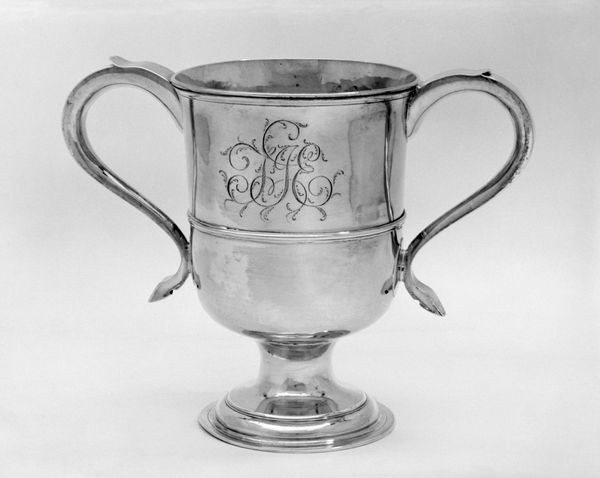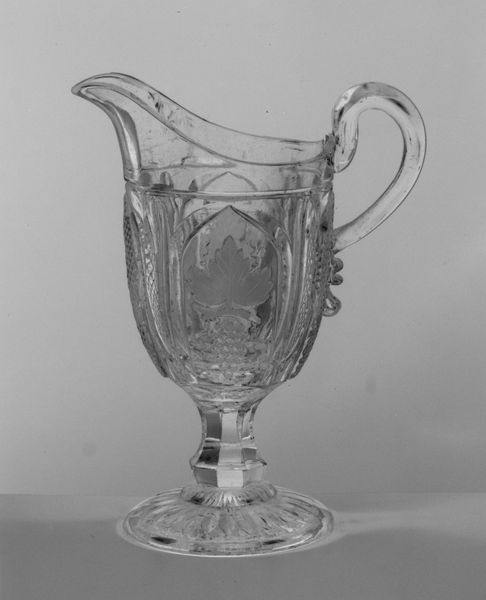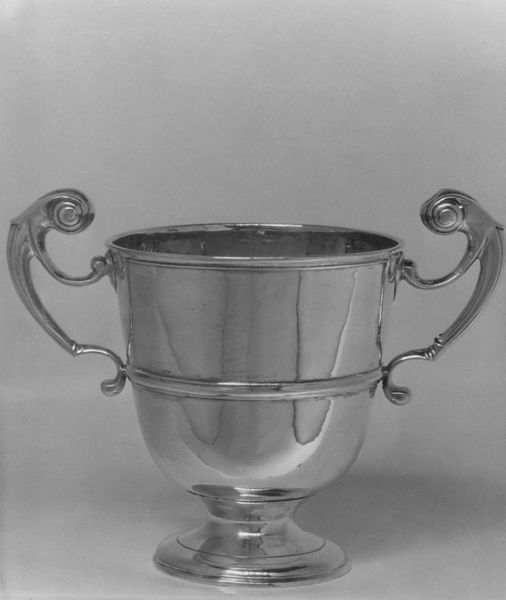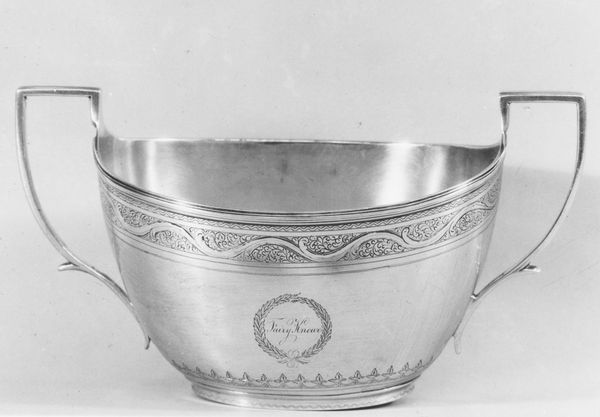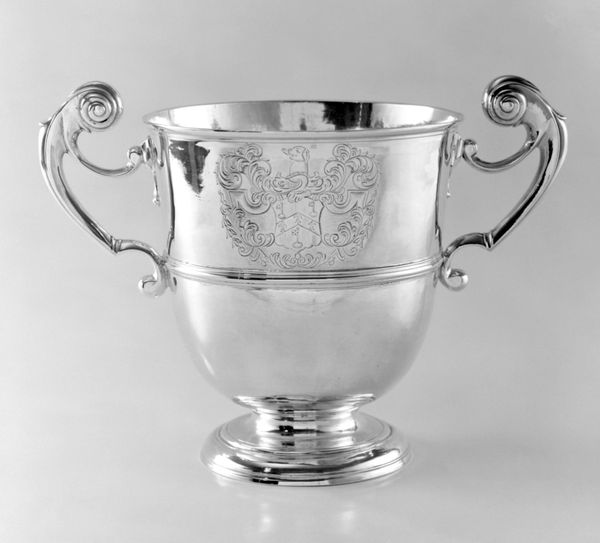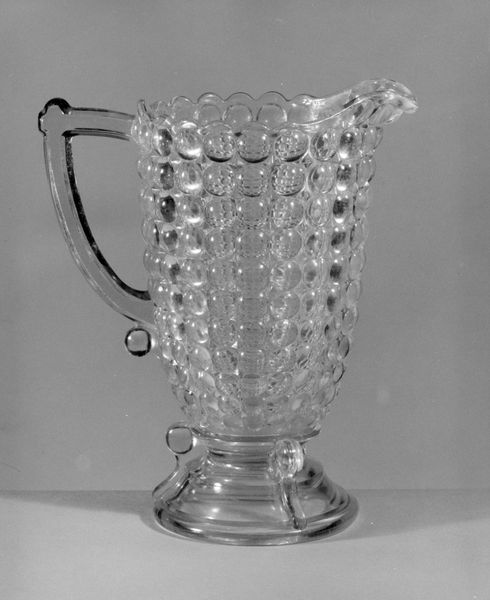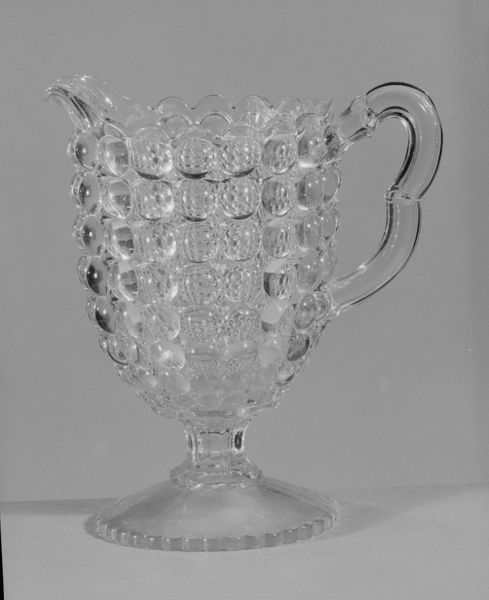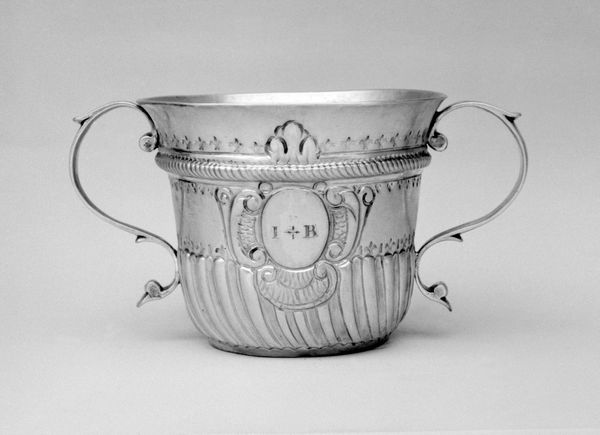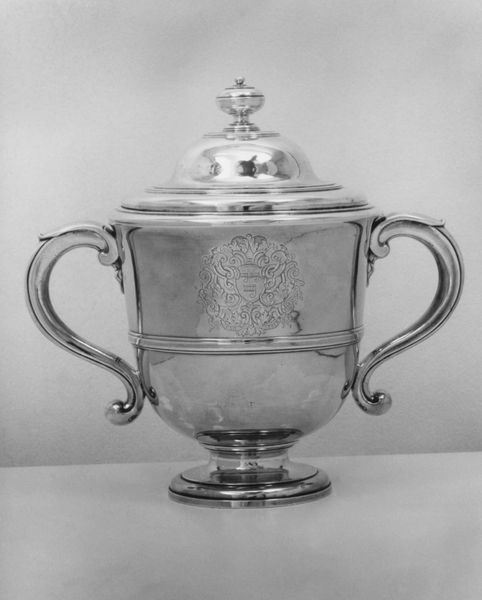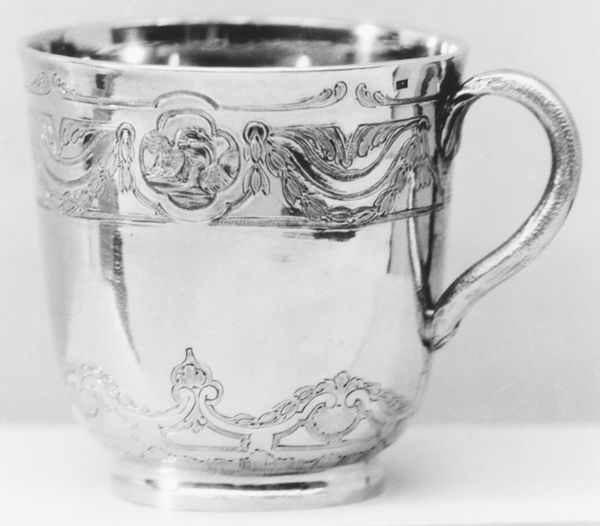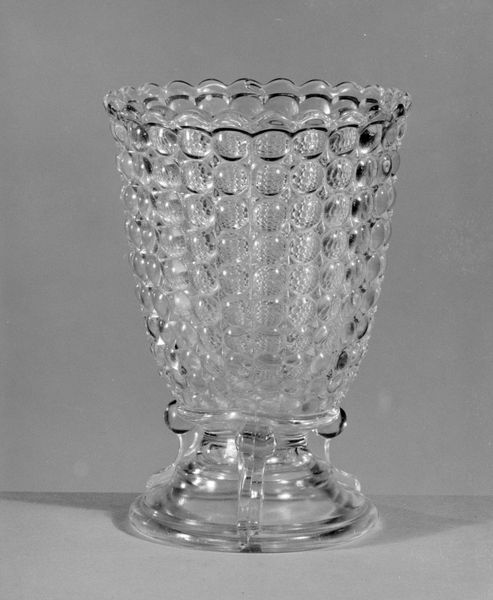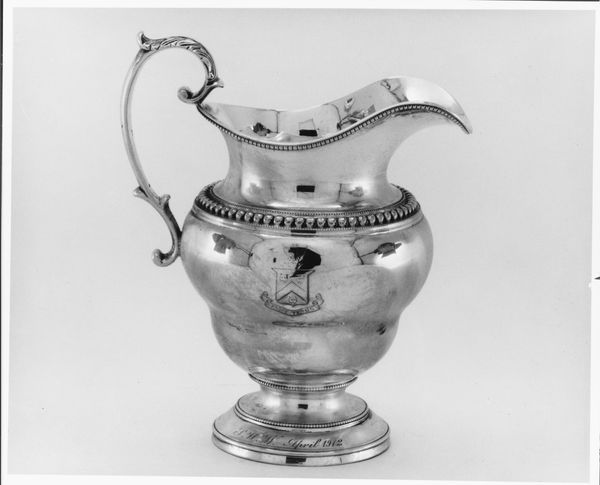
Dimensions: 6 3/8 × 5 3/8 in. (16.2 × 13.7 cm)
Copyright: Public Domain
Curator: Here we have a silver two-handled cup, made by Auguste Le Sage between 1766 and 1767. The piece resides here at the Metropolitan Museum of Art. Editor: My initial impression is one of restrained opulence. The polished silver catches the light beautifully, yet the cup's shape feels surprisingly simple, almost utilitarian. Curator: Its simplicity speaks volumes, doesn't it? The baroque style is evident in the detail around the coat of arms and in the shaping of the handles. But observe how the piece directs attention not towards frivolous ornamentation but to its structural integrity. Think about the labor, the skill, that went into hammering and shaping such a perfectly symmetrical vessel. Editor: Right, I am drawn to the cup's proportion, its balanced symmetry. The eye traces the curves of the handles, notes the distinct register where the bottom and top of the piece meet. The slight hammering texture on the lower part catches the light more subtly, contrasting with the smoothness of the top half. It feels carefully considered, a visual treat. Curator: Exactly. And the materials are not neutral. Silver in this period signaled wealth and status, reflecting its place in trade and social hierarchy. A cup like this wasn't just functional. It performed an important role within complex rituals of display and consumption. Consider, for instance, the source of the silver and the silversmith's place in the craft guild hierarchy. Editor: Absolutely. And consider the visual vocabulary it deploys. That heraldic shield centered so prominently tells us about lineage and power, about visual signifiers for social stratification. And then we contrast that against the relatively straightforward cylindrical cup form. Curator: Indeed. Its very existence prompts reflection on social connections—those who could afford it versus the metalworkers who shaped the object with practiced expertise. Editor: It’s fascinating to consider the different ways to value and engage with artwork, whether as a cultural artifact or as an exercise in studying structural design. Curator: Seeing this object reframes my understanding of that period’s production process, as well as consumption habits. Editor: Yes, indeed, it's definitely stimulated my thoughts concerning aesthetics.
Comments
No comments
Be the first to comment and join the conversation on the ultimate creative platform.
